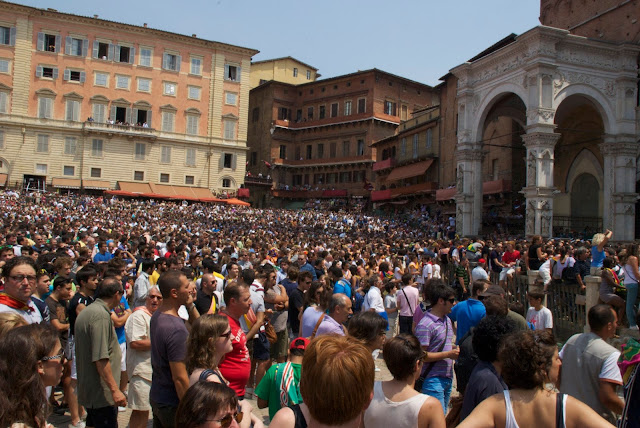If you are considering going abroad this summer you may be wondering how your school day might look. Will it be a drag getting up for school on a warm summer morning? Will you be stuck daydreaming about the outside world during class? Will I have fun? The answers are no, no, and YES!
This is what a typical day could look like for you if you decide to go to Siena.
You get up (early), get ready, and walk (yes, walk) to school. Once you arrive you will enter through this hallway. The photographs on the wall are of classes dating back many decades. Did you know that the building which houses the Dante Alighieri school was the sight of one of the first schools for the deaf in Italy? While classes for the deaf are still held here, this location has also become a museum to the schools history.
This is the main office. The lovely ladies behind the desk will help you with almost anything including arranging cooking classes, travel plans, making copies, and sending out your mail. This spot was also the best place for wifi reception so at break and lunch time it tends to get a bit crowded.

We had Italian class 5 days a week and Luca's culture and history class two days a week. On the days that we were in school until 4 we had a generous 1 1/2 hour lunch. Some of us went home, other stuck around and did homework, and sometimes we just went out to enjoy the day with some pizza and gelato. On the days that we did not have Luca's class we still went to the piazza to enjoy pizza and gelato. Other times we went for great hot sandwiches and a good view or took the walk back to my apartment for the best kebabs in all of Siena.
Field trips were regular: about once or twice a week. Sometimes we simply walked around Siena and other times we went away to Florence. Luca was the best guide and his stories made the city come to new life with its history.

No day was identical. We always had something we wanted to do. After our homework was complete the city was ours. Hanging in the Piazza was a favorite, but so were night photography shoots, cooking nights, walks to the Fortress, trying new restaurants, and meeting new people.























































